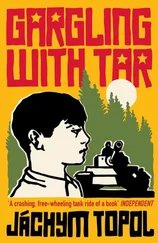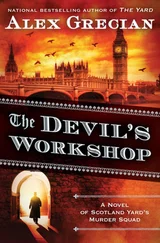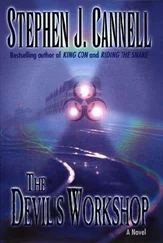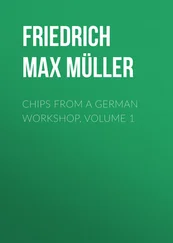He lowers his torch. Tall guy in a rubber coat. Craggy chin. Tough old guy.
Maruška talks a mile a minute, the old man keeps cutting her off. We walk behind him. Other lights flicker in the darkness around us. We come to a huge mound of dirt. This must be where the generator is, I can hear the engine humming. A dim yellow light shines on the heaps of damp earth around us. Light bulbs hang off a wooden flagpole. I see a tent. Crates, benches. I stamp my foot, dirt. Are we in a cave? The ceiling’s too high up to see.
The lights around us are head torches. Now I see them: silent workers moving all around us. Carting wheelbarrows of dirt out of a deep pit reinforced with wood. Long wooden crates sit next to the hills of dirt, stacked on top of each other.
The guy in the rubber coat is still giving Maruška a dressing-down.
I make a move, this is too much. The guy hisses, Maruška turns and disappears into the darkness.
Now he’s staring me in the eyes. I stand as if nailed to the spot.
Mark Isakyevich Kagan, he says, squeezing my hand. You were quite delayed. But the main thing is you’re here, my friend. I trust the journey from Terezín was satisfactory?
He turns away, uninterested in my answer, and we tramp along in the light of his torch. I look around for Maruška, and slip in the dirt. In my mind I thank Alex for giving me solid boots. We come to the big pit with the light bulbs on a pole.
He shines his light into the crates. They’re filled with corpses. Ancient, rotted corpses. One or two in each crate. Some are just a heap of bones. Their skin looks like an old rag or piece of paper with a coating of dried grey cement. In some there’s just a skull and bones. They must have a special rat patrol, that’s for sure.
We never found anything like this in the catacombs. Lebo would’ve pulled us out. That would’ve been too much.
But I know from the way the air rolls around underground why some of the corpses hadn’t rotted completely. You’d find a dog or squirrel like that in some of the Terezín cellars, but the work crews cleaned out most of the human remains after the war.
Kagan calls over one of the workers pushing a wheelbarrow out of the pit. He shines his light on it: yep, full of bones. The worker is a boy with a ponytail. He stops at an empty crate. Takes the bones out with gloved hands, lays them in the crate.
There’s a low, heavy table I hadn’t noticed before. Some coins, pieces of paper on it, a few bullet shells. Old, yellowed photographs. Kagan shines his light on them.
Naturally this is a secret operation, Kagan says. And you see what conditions are like. But we already have results. The Katyn massacre was a walk in the park compared to this, I’m telling you, friend! Kagan slaps me on the back. He’s trying hard to be friendly, but the tension’s coming off of him like a live wire. He picks things up from the table as he speaks.
The last layer’s pre-war, he says. There are thousands of them, maybe ten thousand. That’s why they built the museum here after the war. To cover the execution site.
He hands me a piece of fabric.
These are NKVD epaulettes, he says. Soviet secret police. There’s always something to find in those graves. A family portrait in the lining. Officer stripes. Break open a lump of dirt and you find a piece of newspaper the executioners used to roll their cigarettes.
We keep walking past the crates. To another pit, more like a crater. The light of the head torches reveals the pale, narrow faces of girls. They look funny, hunched down in the muddy pit like fireflies. Brushes and blades flash in their hands.
Classic wartime interlayer, Kagan says, pointing to the pit. Jews. The ghetto was here during the war, right over our heads. The Germans totally wiped it out, killed them all, burned it. Nobody knows it existed.
He points his torch back at the table. A small heap of rusty, twisted bits of metal. The same kind of stuff we used to fish out of Terezín for Lebo. Bent safety pins, hairslides, a small shiny something or other, maybe a flattened bullet. And that’s not all.
Teeth! Kagan raps on the table. None of the villagers ever had their teeth repaired, but the intellectuals all had a filling or two. Some even had dentures. Here they’re all mixed together. And what have we got here?
Kagan points out a badge: a tiny silver skull. He starts picking things out of the pile and holding them up in front of my eyes, flashing his light in my face. I back away and bump into the boy pushing the wheelbarrow. Must’ve wandered over when I wasn’t looking. He’s got one of his co-workers with him, also in muddy rubber boots. The girls start climbing out of the pit, walking slowly towards us. Like they don’t want to miss what their boss is saying.
German prisoners were shot here too. They had to dig their own pit, of course, not too far from the Jewish graves. Something of an irony of history, isn’t it?
Now Kagan is shoving uniform buttons in front of my face. A swastika belt buckle. A badge with a skull.
The girls take everything he hands them and lay the objects back on the table. I’d rather be talking to them. What do I want with some lecture? I’ve had enough of underground graves. For as long as I live. I was pretty angry that Kagan had chased Maruška away. Looking around at the girls, they remind me of someone.
Then it hits me: it was pale creatures just like them, all twisted up with pain inside, who used to come to us, the seekers of the bunks. The girl laying a buckle on the table right now had that same tough, hardened look — except when she looked at Kagan and a softness stole into her eyes.
Kagan turns to go and we follow along behind him, the boys covered in mud, the girls from the pit. Stretching out our stride, mud squirting at every step, we walk back to the pole where the generator hums. And I see more people, standing and sitting around on the crates and benches. Young people. All of them Kagan’s workers, to judge from the mud.
He steps up on a crate and reaches with both hands towards the depths of the cave, or whatever it is we’re in, as if he’s groping for the edge where the light gives way to darkness.
Now all we have left to uncover is the final layer, Kagan says loudly, towering atop the crate in his rubber boots, waving his hands like some spooky magician working his abracadabra. Everybody stands and listens, some clutch a pickaxe or shovel, but nobody so much as coughs or shuffles their feet. Then Kagan raises his voice even louder. The echo is pretty impressive.
Yes, now we will dig in the dirt where the tyrants forced your parents and grandparents to kneel. You know as well as I do that this government won’t allow a word about Belarusians murdering one another. But we will shatter the silence! To forget the horrors of the past is to consent to a new evil, Kagan thunders.
He snatches a shovel out of the hand of one of the girls from the pit and holds it in the air.
You see? Dig in the ground and the house of tyranny will collapse! he cries.
The girl looks happy Kagan chose her. But also a little embarrassed.
Kagan leaps down from the crate and seizes me by the hand. Then he goes on speaking.
Your work in Europe, your devotedly maintained and freely visited burial sites are a model to us, dear friend, he says, pumping my hand.
Terezín is in every encyclopaedia, every textbook, he says, speaking now just to me. We want to be on the world map too. We believe you can help us achieve that.
Kagan is shaking my hand, sealing our bond of brotherhood, when all of a sudden we hear it: a sharp, nerve-rending sound. A siren. It wails intermittently as the yellow bulbs blink on and off. An alarm.
Everyone freezes at first, then springs into motion, some people go running off into the dark as Kagan drags me towards the tent. I don’t resist, since all of a sudden I see her, holding open a flap. We slip inside, Kagan gropes around on the ground, lifts a wooden cover. I see stairs, the faint glow of light bulbs. Maruška’s right behind me, we clamber down the steps, there are others behind her.
Читать дальше












